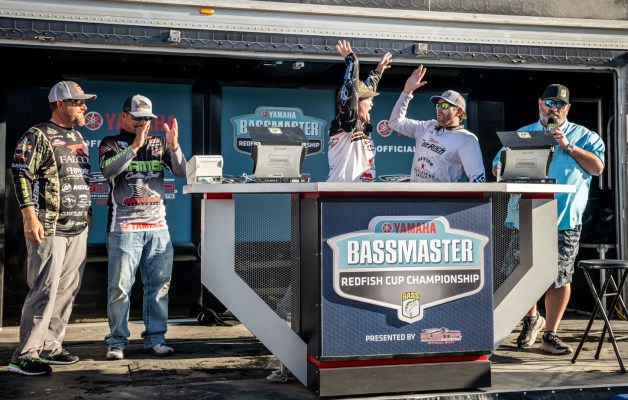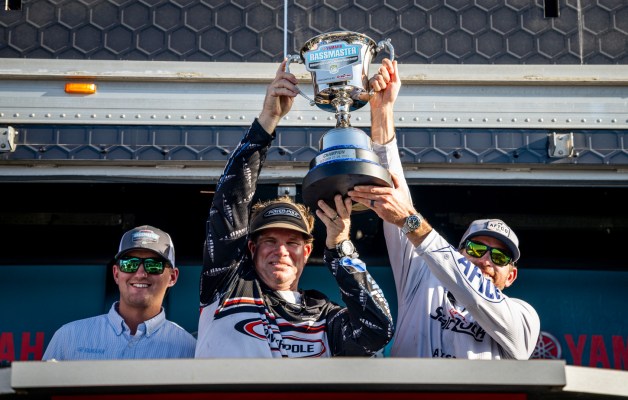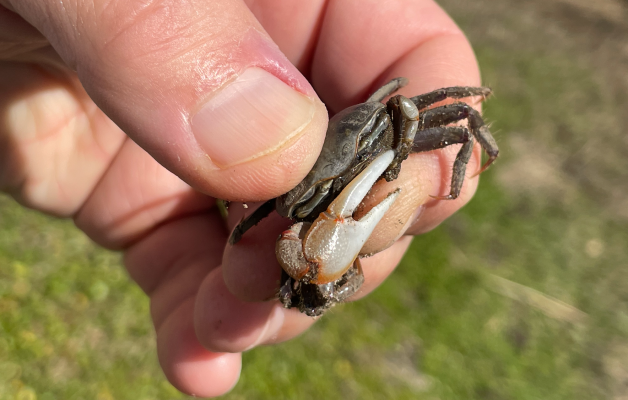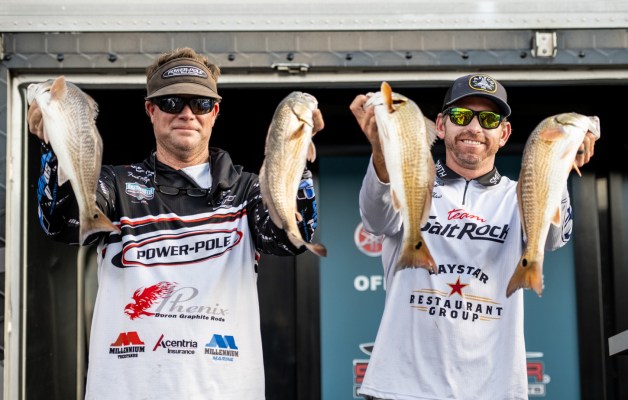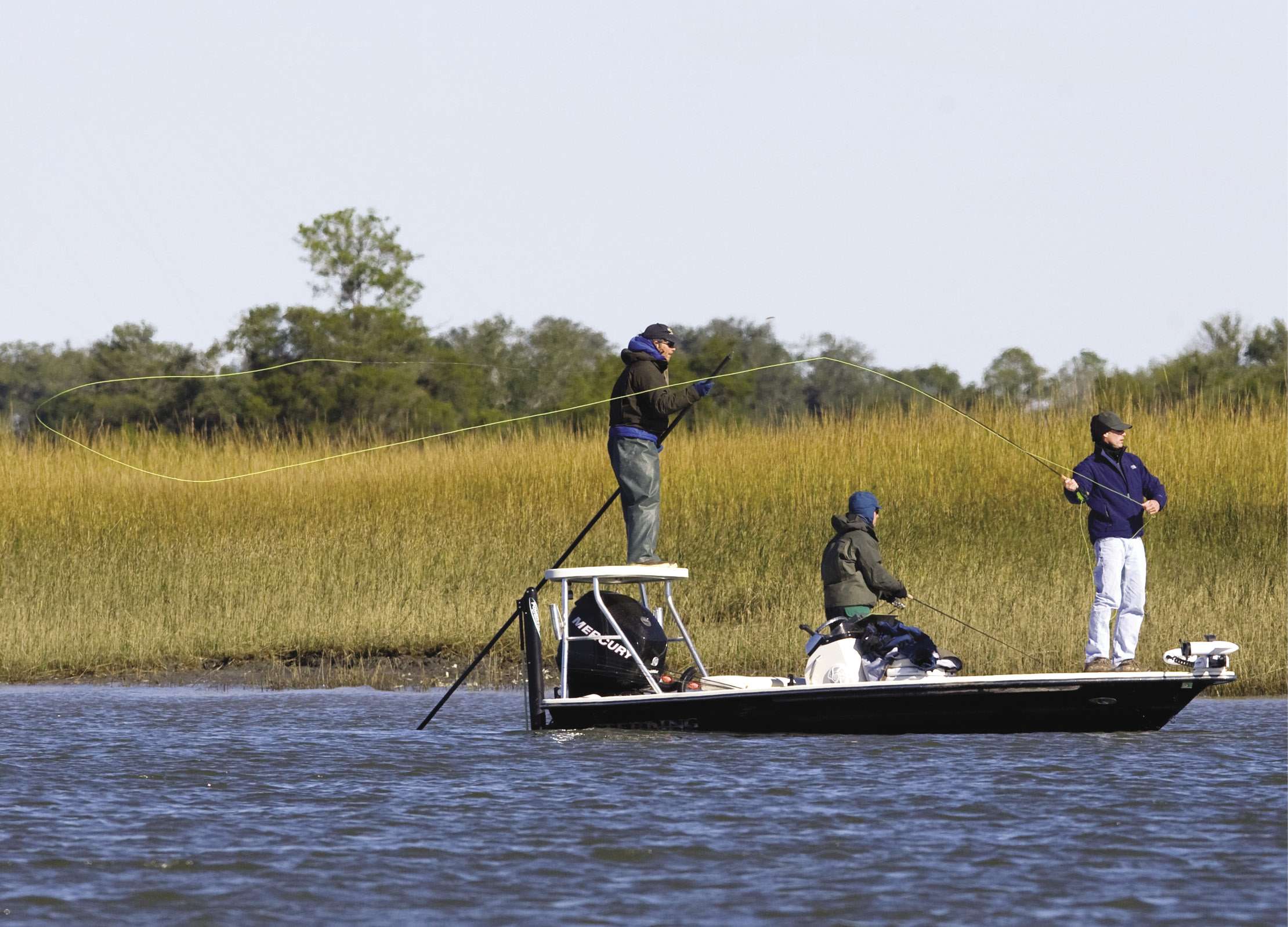
It’s unseasonably cold even for mid-November on the south Atlantic Coast, and two anglers and their guide, competing in the second and final day of the ESPN Outdoors Saltwater Series Redbone Savannah Red Trout Celebrity Classic, are swaddled in winter clothes for their morning run.
Hoods, hats, gloves, glasses, boots, balaclavas, synthetic windproof/waterproof/painproof this, that and the others … the works for four guys in an 18-foot skiff racing north through the Intracoastal into a 20 mph head wind. It’s 7:30 a.m. on a Saturday, right about the time when dreams are supposed to be tapering off into thoughts of breakfast, not when we should be outfitted for an ice climb in the Andes.
Sitting on the floor of the boat with his back to the onrushing chill is Bob Vaught, visible only as a strip of pink face underneath the hood of his Weather Channel-branded jacket. He’s going fly fishing — fly fishing! — and looks like he’s about to deliver a live report from the business end of a Nor’easter.
Across from him is Capt. Scott Owens, piloting this mad craft. Beside him is a friend of Vaught’s since time immemorial, Johnny Hurlburt, who’s clutching chemical hand warmers and has hunkered and knotted his body against the wind like a balled fist. On the floor across from him is a writer — who is of little consequence on this trip — who defines success as avoiding hypothermia.
How did we get to this point? Savannah’s only two highway hours from Florida; we should be holding beers against our foreheads to stay cool. However, the tournament was going to unfold regardless, and the show must go on. Sub-freezing overnight lows were no excuse to renege. And in the case of Vaught, Hurlburt and Owens, redemption was on the line. Fishing in the tournament’s fly division — the most technically challenging category, more daunting than throwing live shrimp or artificial lures on baitcasters — the men had caught only a single fish the day before. The good news, at least, was that they had found gobs of redfish, 60 to 100 per school, meandering around a cove near Hilton Head, S.C., that Owens and Vaught had analyzed before the tournament. With a ruler and a map at Vaught’s house, the men determined that this particular pocket of water would be the most sheltered from the wind.
And that turns out to be a good thing. The run up there is a different story. As the crew hits the water a little after 7:30 a.m., what had been merely a cold day becomes frigid while speeding at 30 mph into a 20 mph head wind.
The ride is nasty cold but endurable until we hit a bay fraught with whitecaps. An overnight northeast wind had blown the high tide a few inches higher than usual, and now, with the wind still blowing down the pipe between two islands and the receding tide pushing back against it, the little skiff struggles.
Then Owens blurts, “Sit up, sit up, sit up, sit up!” As he tries to weave through the wake of a passing boat, a wave slops over the port bow. Vaught springs up a moment too late, and the water runs over and under him, starting with the middle of his back.
As we press on across the bay, its surface a meringue, water sprays everywhere, soaking pants, leaving salt deposits on glasses, drenching shoes (and that’s about all that anyone feels from their toes for a while). The bottom of the skiff, built flat to allow passage into the shallowest backwaters, smashes against the waves. On the verge of calling it quits, Owens decides to take the long way — a series of back canals that adds 20 minutes to the trip but promises smoother passage.
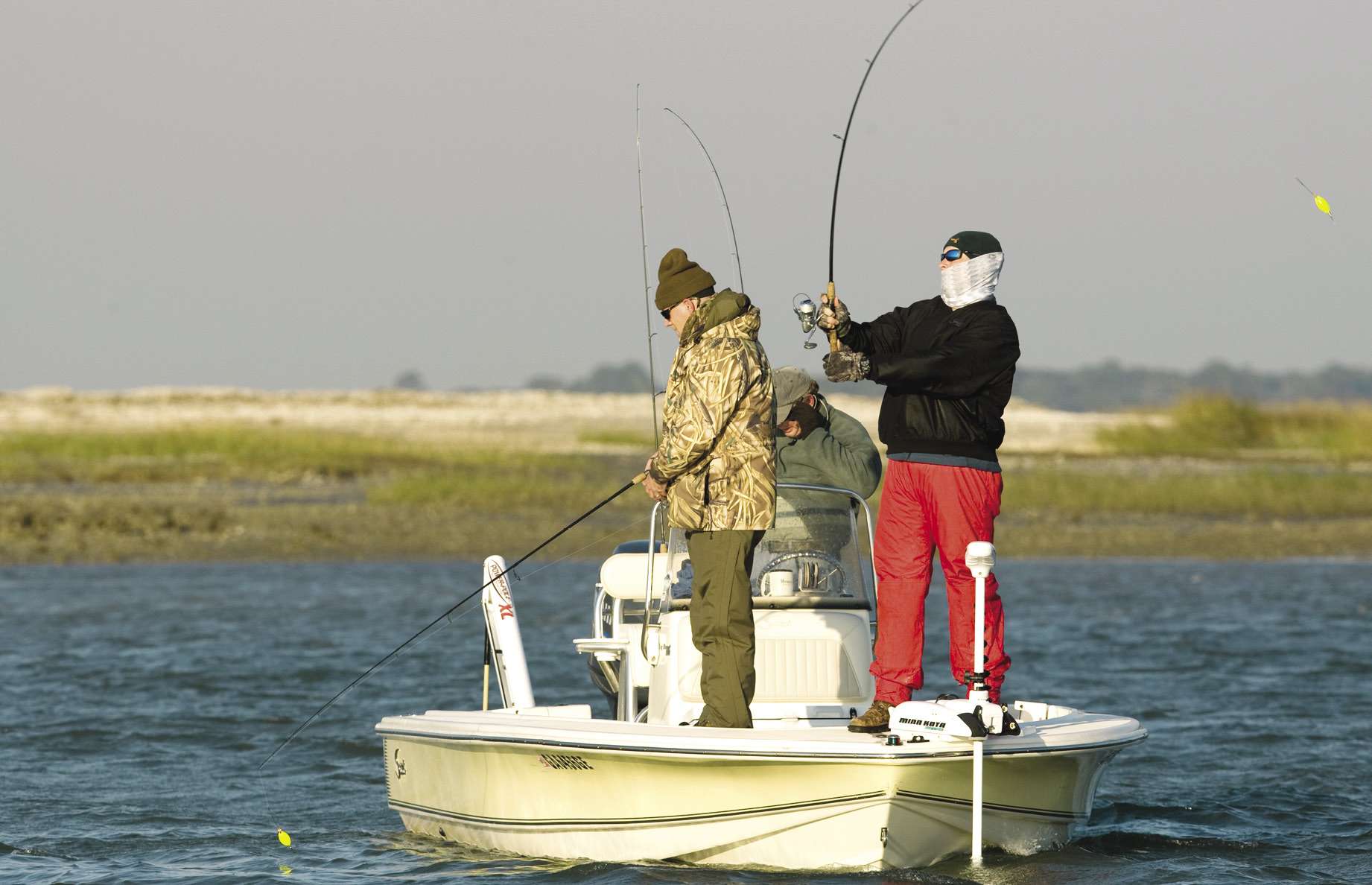
We zip past homes. Big homes on the water, three-story jobs, serious nests; homes with central heating, toe-snuggling carpet inside, steaming coffee mugs you can wrap both hands around on lazy Saturday mornings under a down duvet with the dogs on the divan. Homes in which someone is slapping the snooze button and rolling over to spoon his sleeping wife. In which someone changes into the cotton socks, as the wool makes his feet sweat, and someone else stands an extra five minutes in a high-pressure shower, letting the bathroom mirror fog over completely.
Outside, wind blows against wet pants, up sleeves, into every exposed sliver of skin. The chill is a malice, a blind thing that peels you. The ride is, in all, the kind of experience that teaches a man not to whine about anything, ever.
Around 9 a.m., after more than a solid hour of running, we pull into a shallow cove littered with exposed oyster beds. Vaught pulls out his fly rod and from the casting platform on the bow sets about plopping flies in front of the redfish that Owens spots from the poling platform at the stern. Hurlburt amuses himself with a casting rod, making dozens and dozens of casts at various spots throughout the course of the day, without so much as a nibble to show for it. He’s blind casting, probing. Vaught, though, is engaged in trying to fool fish with a feather, sight casting with a fly on saltwater, an elegant challenge that nonetheless pays quick dividends.
After a few minutes, Vaught lands a small redfish, silver in color, that Owens measures and kisses and releases even as Vaught readies the next cast. The day is still abusively cold but, shielded by an island with a dense line of oaks, hardly as windy.
Then, as quickly as it had revealed itself, the bite simply ceases.
Owens spots fish. He poles toward them. Vaught makes the cast. And the fish simply won’t have it. This is the sort of fishing that acquaints anglers and guides with the fish they’re chasing. It’s a hunt, and it’s visual. When Owens notices the redfish pulling their pectoral fins close against their bodies, he knows it’s going to be tough. Successful saltwater fishing requires a host of variables to align. The fish have to be present. The angler has to be able to cast well. The physical conditions need to be hospitable, and with the light wind and clear skies, Owens figures this spot should be good for five or six fish. But when the fish pull themselves in tight, ball themselves up the way Hurlburt did against the wind tunnel commute to get here, Owens knows they’re not in a mood to be enticed by a fly.
Still, Vaught casts. He rigs different flies: a Razmataz, an EP shrimp, a Gold Wobbler, a Dorsey’s Kwan. And yet, bubkes. We eat sandwiches. We massage handwarmers. We wipe snot from our nostrils with sleeves and gloves. We discuss what life would be like if all our toes had to be amputated.
The sun wakes up. It turns out to be a nice enough day. But the fish do not want to come out to play.
We drift. We run. We cast at a dock. We hit more banks. We sway in the wake of a ferry. A trout nibbles at Vaught’s fly, maybe. Suddenly it’s 3 p.m., and lines come out of the water.
Only now does Owens get around to tallying the fish caught that day. On a clipboard he had kept dry in a garbage bag in a hull compartment, Owens marks the top line of a scoresheet. One fish. A red. On fly. At 9:29.
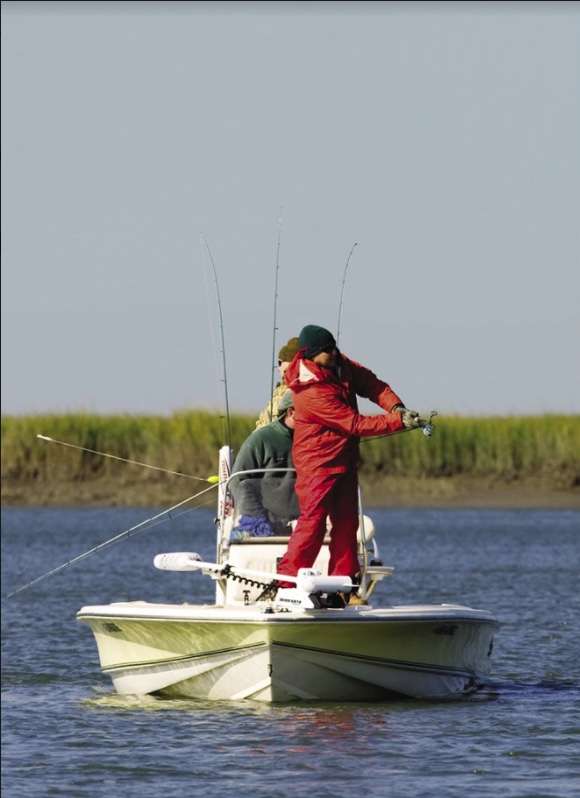
“That was a long day,” Owens said, “to catch one fish at 9:29 and not another.”
Weeks later, though, he still recalls that fish. That one fish. “Any time you work so hard for one fish, it makes it that much more special,” the guide says. “It makes you appreciate that fish, that day, that moment, that second, that much more.” He remembers it more vividly than any he caught even hours before on a trip when his clients boated 20.
There’s something about one-fish days. With a fish in the boat at 9:30 a.m., a day never feels like it will be a one-fish day. But sometimes you run in the coldest, wettest, choppiest conditions you’d ever care to see, cast your heart upon the water for hours, and the elements reward you with a single fish.
It reminds him of a fishing trip to the Marquesas the previous winter. For years, he had tried to catch a permit on fly. Permit — now that’s a gamefish. Eyes like silver dollars. Doesn’t miss a thing.
Three days he fished, casting well, casting badly, battling through everything. On the fourth day, wind whipped up whitecaps and forced him to the sheltered side of an island. Thirty minutes, he and his guide decided. Long run back. Thirty minutes, and they were out of there.
Fifteen minutes later, they had a permit on. Owens fought the fish for more than an hour before hauling it aboard and weighing the beast at 31 1/2 pounds.
“You ask me if I’d do it again,” the guide says. “I’d spend seven days without catching a fish to get another one like that.”

